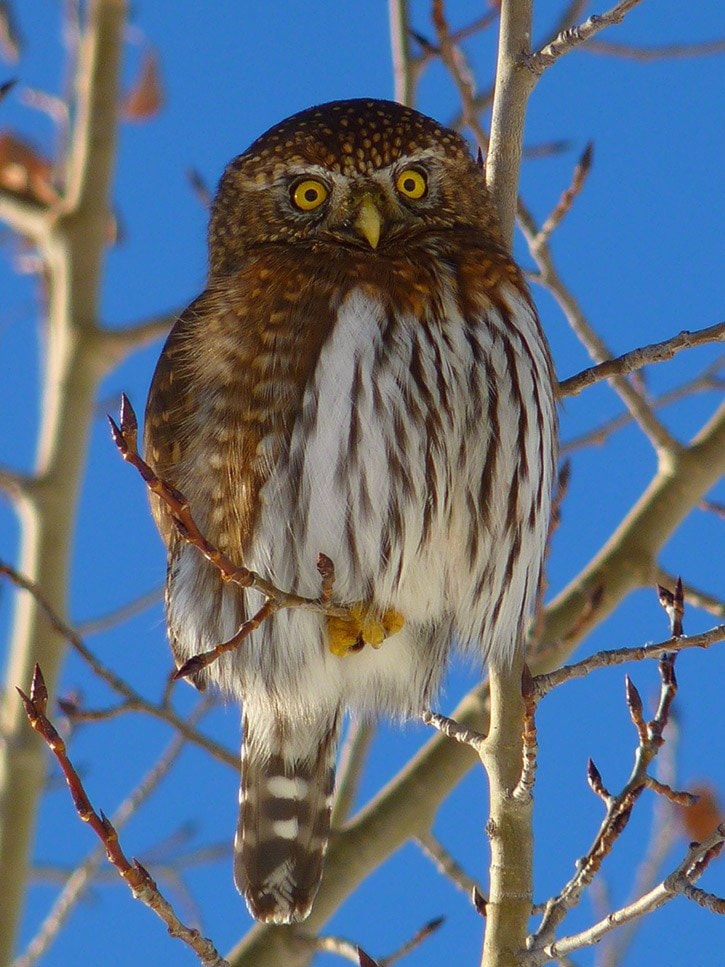Williams Lake Field Naturalists held their 46th annual Christmas Bird Count on Dec. 15 in generally mild conditions, but the big freeze earlier in the month had taken its toll on bird numbers.
The 37 counters in the field in 16 parties along with 17 feeder watchers tallied 3,954 birds of 47 species, about 200 birds and six species less than the 10 year average.
With the lake frozen, only a handful of waterfowl remained on the few patches of open river water or the city sewage lagoons.
While the loss of several duck species contributed to the generally low numbers, several of our winter finches were also absent this year including Pine Siskins, missed for the first time in 10 years; Common Redpolls and Pine Grosbeaks have only been missed once before in the last 10 years and Evening Grosbeaks numbers continue to dwindle with only one bird in 2012 and none this year.
Some species, however, had a bumper year and none more so than the Townsend’s solitaire, a member of the thrush family which relies almost exclusively on juniper berries at this time of year.
Our previous high of 50 birds was eclipsed with 86, the highest number ever recorded on any bird count anywhere in Canada.
Other birds appearing in record high numbers included Dark-eyed Junco with 515 and Song Sparrow with 52.
Both Northern Flicker and American Robin improved their previous best by one with Flickers up to 50 and Robins to 31.
Also edging previous high count numbers were the Varied Thrush (three) and Spotted Towhee (four).
The Northern Pygmy Owl came close its previous record with six seen including one photographed by Kris Andrews on White Road.
A bird making a welcome return was the Sharp-tailed Grouse.
A single bird was seen at Esler playing fields for the first count sighting since 1973. Another bird on the increase is the Eurasian Collared Dove, an introduced species from Eurasia which has spread across N. America having first arrived in Florida in 1982.
It was not spotted in the Cariboo until 2008 and this winter there are at least 20 believed to be wintering in the region with six recorded within the 24 kilometre count circle.
Another two wintering at a South Lakeside feeder were not seen on count day.
Results of the count along with over 400 others across the country are submitted to Bird Studies Canada and the National Audubon Society where the figures are further refined by applying the number of party hours and the distances travelled.
This provides more meaningful data for analysis by scientists involved in determining trends in winter bird populations.
